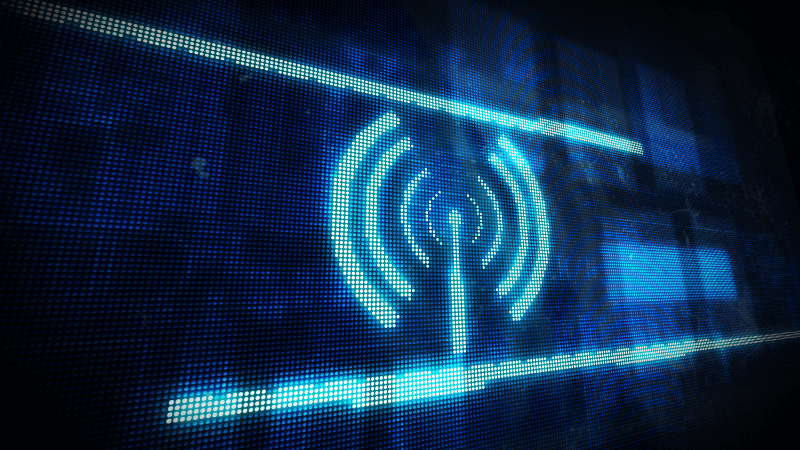Ecobee Won’t Connect to Wi-Fi – Troubleshooting
By Trae Jacobs,
When you buy through our links, we may earn an affiliate commission.
You may feel frustrated when your ecobee devices refuse to connect to your home’s Wi-Fi. Ecobee devices won’t connect to Wi-Fi for several reasons.
If an ecobee doesn’t connect to Wi-Fi, the most common reasons are:
- A power outage
- A disconnected router
- Incorrect encryptions
- Poor signal strength
- Incorrect Wi-Fi password
- Incompatible router broadcast network
This article will explain the potential causes behind ecobee connectivity issues. We’ll also follow a step-by-step guide for fixing any Wi-Fi connection problems.
Why Your ecobee Won’t Connect to Wi-Fi
There are several reasons why an ecobee SmartThermostat or SmartCamera will have connectivity issues. We highlight each issue for you to troubleshoot below.
Lack of Power
One of the main reasons why your ecobee won’t connect to the internet can be due to a faulty power source.
If your ecobee devices or router aren’t correctly connected to a power source, you will struggle to make or maintain a Wi-Fi connection.
It is important to check the power outlet regularly to prevent power failure issues.
Disconnected Router
If a router is disconnected from the modem or internet, it will fail to broadcast a Wi-Fi signal.
A router can be turned on and appear to run correctly, but if it isn’t connected to a modem or live ethernet cable, it won’t connect to your ecobee devices.
Incorrect Wi-Fi Password
Many Wi-Fi passwords are difficult to remember. Double-check your input before submitting it. It may be the root source of the issue.
Incompatible Router Broadcasting Network
Wi-Fi routers can broadcast on multiple bands. Primarily, routers broadcast on either a 2.4GHz network or a 5GHz network.
If your router is broadcasting on anything besides 2.4GHz, you’ll need to change it. Ecobee devices only function on this network setting.
Most internet providers provide 2.4Ghz and 5.0GHz services to residential households. Give your service provider a call if you are unsure if you have a 2.4GHz connection.
Incorrect Encryption Type
The ecobee manufacturers upgrade their device firmware regularly. This includes updating the encryption types.
If your router is set to TKIP encryption settings, you’ll need to alter those settings to WPA/WPA2-AES.
Otherwise, the ecobee device will consider your network unprotected and fail to form a connection.
Poor Signal Strength
If your router produces a medium-strength or low-strength signal, it may need to create a stronger signal for proper Wi-Fi connectivity.
Check your Wi-Fi signal strength to determine whether this is the cause of your connectivity issues.
Windows 10 Devices
To view WiFi signal strength on a Windows 10 device, follow these steps:
- Click the network icon on your taskbar
- Look at the wireless connection bar
- Note how many bars are colored in
You have weak WiFi connectivity if you see one or two bars colored in. If you have every bar colored in, then your signal is strong.
Mac/iPhone/iPad
Mac computers operate differently than Windows computers. You need to follow these instructions to check your WiFi connection:
- Go to settings
- Select Airport Utility
- Toggle WiFi scanner
- Go back to the Airport Utility app
- Start a scan
Measurements will appear via RSSI. This will help you determine whether or not the signal is strong enough to connect your ecobee to WiFi.
If you’ve gone through these tips and still don’t have it fixed, don’t worry. We’ve got some great universal troubleshooting tips for you.
How to Connect Your Ecobee to Wi-Fi
Now that we’ve reviewed the potential causes behind an ecobee product’s Wi-Fi problems let’s discuss possible solutions.
Change Your Router’s Broadcast Network Settings
Open a browser application and type your router’s IP address into the search bar.
Open the Command Prompt on your Windows computer, type “ipconfig,” and press the Enter key to see your router’s IP address.
If you’re using an iOS device:
- Open Network Settings after accessing System Preferences
- Select your Wi-Fi network and open the Advanced tab
- Find your IP address beside ‘Router’ after choosing the TCP/IP button at the top,
To log in to your router’s user account, you’ll need to find your IP address and enter it into your browser’s search bar.
You can access advanced or wireless settings by logging in to your account. Make sure the frequency band is set to 2.4GHz.
Change Your Router’s Encryption Settings
You should be able to access your encryption settings via the same router wireless settings menu. If your settings are set to TKIP, change it to WPA/WPA2-AES.
Exit your browser and restart your router. You may need to move your router if your ecobee device still won’t connect.
Move Your Router
If your Wi-Fi signal strength is low, relocate your router. Distances greater than 150ft (45.72m) can cause Wi-Fi signals to fail.
Place your router closer to your ecobee devices. Invest in multiple routers for your home, especially if you live in a multi-level building.
Upgrade Your Router
Upgrade your router if your connections are stable, using the correct encryption type, and using the right network broadcast signal, but the signal is still weak.
Don’t be afraid to browse the best long-range routers.
Follow the Prompts
Remove your ecobee thermostat from the wall, power down your SmartCamera, and reconnect them.
By following the prompts during initialization, you should be able to connect to your Wi-Fi without difficulty.
In Summary
Ecobee devices may have trouble connecting to your Wi-Fi for several reasons. Troubleshooting the potential issues will help you get your ecobee device working in no time.
Does your ecobee sensor keep disconnecting? Check out this article for troubleshooting tips!

